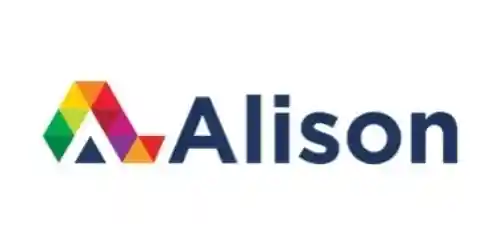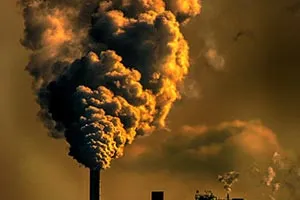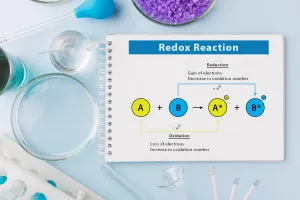
Chemical Safety; Relief and Risk Assessment 
Learn about the design and installation of sprinkler systems in this comprehensive course on Chemical Safety. Discover the different types of sprinkler systems and gain insight into the process of installation. Explore relief systems and their importance, as well as various relief scenarios. Understand the concept of relief sizing and learn how hazards are classified and identified. Dive into the health and safety regulations at work and explore tools for risk assessment in the workplace. Perfect for those interested in understanding sprinkler systems and hazard identification. Enroll now to enhance your knowledge and skills in Chemical Safety. ▼
ADVERTISEMENT
Course Feature
![]() Cost:
Cost:
Free
![]() Provider:
Provider:
Alison
![]() Certificate:
Certificate:
No Information
![]() Language:
Language:
English
Course Overview
❗The content presented here is sourced directly from Alison platform. For comprehensive course details, including enrollment information, simply click on the 'Go to class' link on our website.
Updated in [September 15th, 2023]
What does this course tell?
(Please note that the following overview content is from the original platform)
In this course, you will learn about the design and development of sprinkler systems, as well as the various types of sprinkler systems. The process of installation of sprinkler systems and an introduction to relief system will also be covered in this course. Then, the course will teach you about the various types of relief systems, and then introduce you to relief scenarios.
Then, this course will teach you about the concept of relief sizing, and the definition of hazards and how hazards are classified. You will also learn about the various methods which are used to identify hazards. Lastly, this course will teach you about the health and safety at work act, and various tools available for risk assessment in the workplace.
This course is helpful for learners who want to understand how sprinkler systems are designed and installed, as well as the development process of sprinkler systems. The learner will also be able to understand the importance of relief systems and look at some relief scenarios. Begin this course now to understand the various classifications and methods of identifying hazards.
We consider the value of this course from multiple aspects, and finally summarize it for you from three aspects: personal skills, career development, and further study:
(Kindly be aware that our content is optimized by AI tools while also undergoing moderation carefully from our editorial staff.)
What skills and knowledge will you acquire during this course?
By taking this course, you will acquire knowledge and skills related to chemical safety, relief and risk assessment. You will learn about the design and development of sprinkler systems, the process of installation of sprinkler systems, and the various types of relief systems. You will also gain an understanding of relief sizing, the definition of hazards, and the various methods used to identify hazards. Additionally, you will become familiar with the Health and Safety at Work Act and the various tools available for risk assessment in the workplace.
How does this course contribute to professional growth?
Taking this course on Chemical Safety; Relief and Risk Assessment can greatly contribute to professional growth. By learning about the design and development of sprinkler systems, as well as the various types of sprinkler systems, the learner can gain valuable knowledge and skills that can be applied in their professional career. This understanding of sprinkler systems can be particularly beneficial for professionals working in industries where chemical safety is a concern, such as manufacturing plants or laboratories.
Furthermore, the course covers the installation process of sprinkler systems and introduces the concept of relief systems. This knowledge can be valuable for professionals involved in the installation and maintenance of safety systems, as well as those responsible for ensuring the safety of their workplace. Understanding relief systems and relief scenarios can help professionals identify potential risks and take appropriate measures to mitigate them.
The course also delves into the concept of relief sizing and the classification of hazards. This understanding can be crucial for professionals involved in risk assessment and management. By learning about the various methods used to identify hazards, professionals can develop a comprehensive approach to assessing and addressing potential risks in their workplace.
Lastly, the course provides insights into the health and safety at work act and introduces various tools available for risk assessment in the workplace. This knowledge can be particularly valuable for professionals working in roles related to occupational health and safety, as it equips them with the necessary tools and understanding to ensure a safe working environment.
Overall, this course on Chemical Safety; Relief and Risk Assessment offers a comprehensive understanding of sprinkler systems, relief systems, hazard identification, and risk assessment. By acquiring these skills and knowledge, professionals can enhance their expertise, improve workplace safety, and contribute to their professional growth.
Is this course suitable for preparing further education?
Yes, this course is suitable for preparing further education. It covers topics such as the design and development of sprinkler systems, the installation process, relief systems, relief sizing, hazard identification, and risk assessment. This course provides learners with the knowledge and skills necessary to understand the importance of safety in the workplace and how to assess risks.
Course Syllabus
Introduction to Reliefs
In this module, you will be introduced to the design of sprinkler systems, as well as the types and installation of sprinkler systems. The topic also examines an introduction to relief systems, the various types of relief systems, and an introduction to relief scenarios.Hazards and Risk Assessment
In this module, you will be introduced to relief sizing, the definition of hazards, and its classifications, as well as the methods of identifying hazards. You will also be introduced to the health and safety at work act, and various tools available for risk assessment.Course assessment
Course Provider

Provider Alison's Stats at AZClass
Discussion and Reviews
0.0 (Based on 0 reviews)
Explore Similar Online Courses

Diploma in Drug Delivery and Tissue Engineering

AP Chemistry: Chemical and Nuclear Reactions

Python for Informatics: Exploring Information

Social Network Analysis

Introduction to Systematic Review and Meta-Analysis

The Analytics Edge

DCO042 - Python For Informatics

Causal Diagrams: Draw Your Assumptions Before Your Conclusions

Whole genome sequencing of bacterial genomes - tools and applications

Additive Manufacturing Architecture

Advanced Diploma in Polymer Physics


Start your review of Chemical Safety; Relief and Risk Assessment